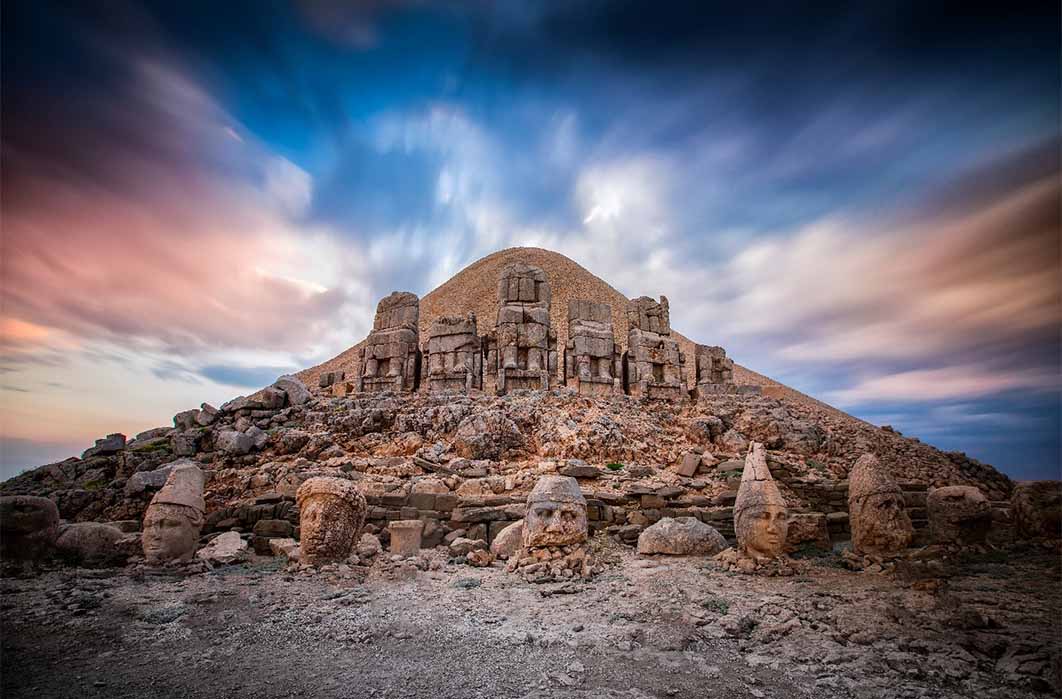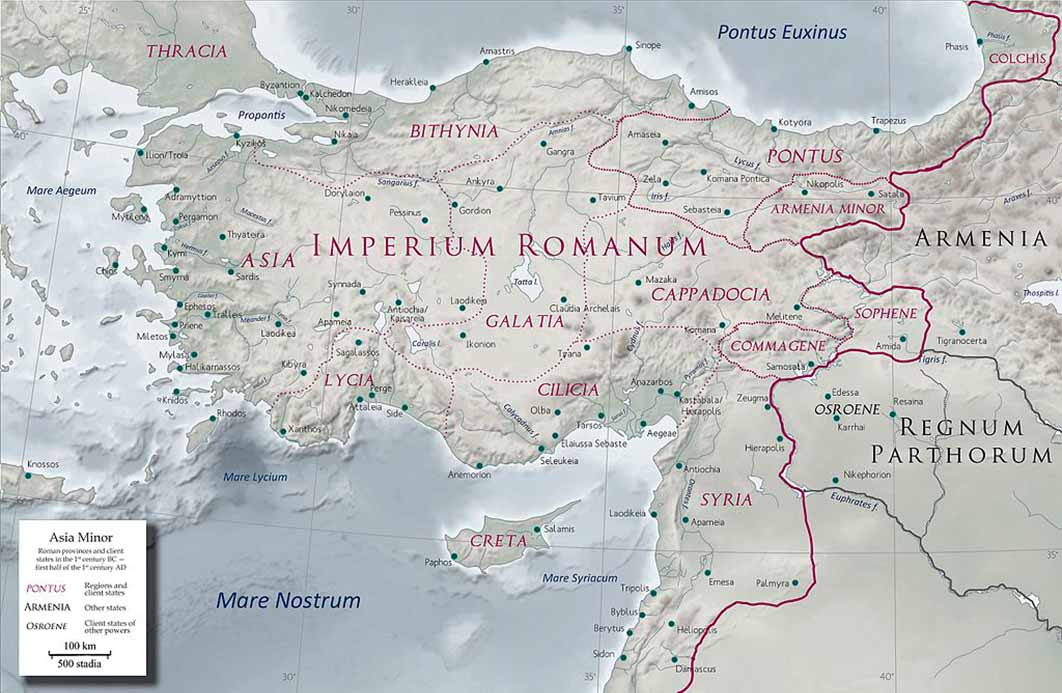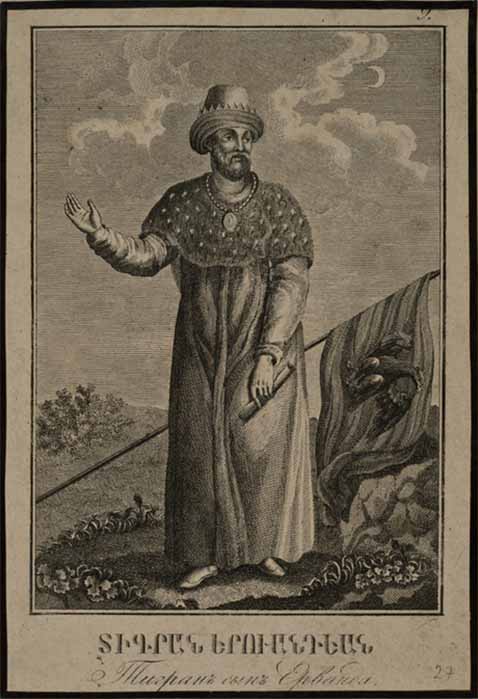
Mount Nemrut, Apex Of The Kingdom Of Commagene
Crowned by Mount Nemrut, the territory of the Kingdom of Commagene, landlocked by Syria on the south, Cilicia on the west, Cappadocia on the north-west, Sophene on the north-east and Osroene on the east, was not very large in circumference, and it did not even last a full two centuries from 163 BC to 17 AD. However, its lack in size and duration was made up for by its rich prelude in history and its fourth king, Antiochus I Theos, whose megalomania led to millions of people visiting his kingdom and paying tribute to him even today, as he intended. Antiochus I Theos claimed himself a god, but there is no denying that his royal lineage was impressive. He was the creator of Mount Nemrut and the monumental pantheon of statues of himself and the gods on the mountain summit provide ring-side seats to history unfolding on the staged landscape before them. Gazing towards the east over centuries, the headstone of Antiochus would have seen the rise and fall of the Achaemenid Dynasty, as well as the Parthians; and gazing towards the west he would have seen the advance of Alexander the Great, the rivalry between the Seleucid and Orontid Dynasties for control of Armenia and finally the Roman legions marching into his land, swallowing his little Kingdom of Commagene.

Anatolia in the early first century AD with Commagene as a Roman client state (Caliniuc/ CC BY-SA 4.0)
Historical Backdrop
The Achaemenids were a royal Persian Dynasty (730 – 330 BC) whose vast empire stretched from Egypt and south-eastern Europe in the west – including Armenia - to the Indus Valley in the east. During the eighth to seventh centuries BC, the province of Sophene (in Armenia) was part of the Kingdom of Ararat (Urartu). By 600 BC it was ruled by the Orontids of the Kingdom of Armenia.

Cyrus interrogates the king of Armenia by Noël Coypel, Museum of Grenoble (Public Domain)
The origin of the Orontid Dynasty of Armenia is shrouded in mist. Xenophon’s Cyropaedia (370 BC) the partly fictional biography of Cyrus the Great, (r 559 – 530 BC) founder of Persia's Achaemenid Empire, mentions the unnamed King of Armenia. His name is supplied later by fifth-century BC Armenian historian Movses Khorenatsi in his History of Armenia as ‘Orontes’. Both references to this Orontes as the original King of Armenia, who met with Cyrus the Great, has been reviewed as legendary rather than factual. Tigranes, son of Orontes was the legendary Armenian prince, contemporary and friend of Cyrus the Great. According to Movses Khorenatsi, the Median King Azhdahak feared the alliance of Armenian Tigranes and Persian Cyrus. He devised a plan where he married Tigranuhi, the sister of Tigranes, in order to lure and kill him. However, Tigranuhi warned her brother of the plot. Tigranes marched against Media at the head of an army comprising of forces from Cappadocia, Georgia, Caucasian Albania, and Greater and Lesser Armenia – which included Commagene - and killed Azhdahak.

19th-century imaginary rendition of Tigranes (Public Domain)
Around the fifth century BC, the Persian Cyrus the Great’s descendant, Achaemenid King Darius I the Great, supressed a rebellion of the Armenians, and he appointed satraps, who regularly intermarried princesses of the Achaemenid Dynasty. Xenophon – of the famous March of the Ten Thousand – makes mention in his Anabasis (401 BC) of a certain nobleman called Orontes I, satrap of Armenia, who pursued the Ten Thousand Spartans. Darius’ descendent Artaxerxes II (405/4 - 358 BC) King of Kings of Persia at that time, gave his daughter Rhodogoune in marriage to Orontes I. Thus, by the time of Artaxerxes’ reign Orontes was no longer a legendary figure, but a historical one and the Orontid Dynasty could claim linage to King Darius the Great of Persia.




